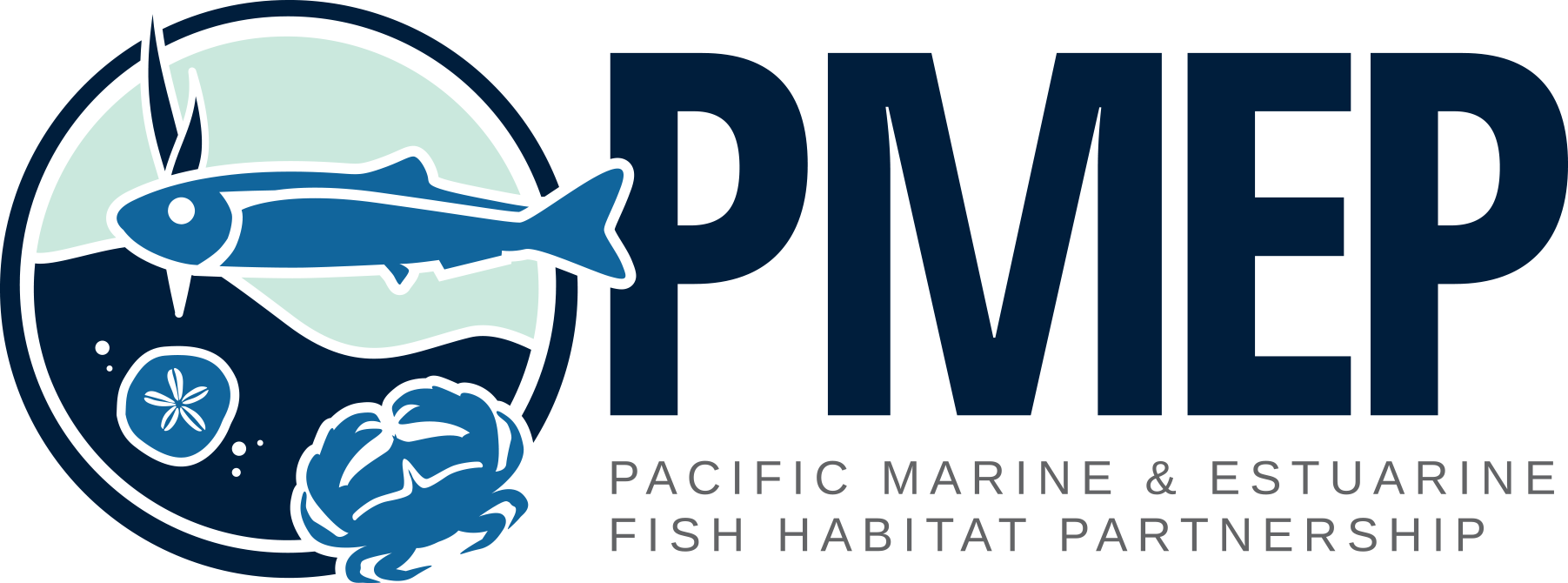The Pacific Marine and Estuarine Fish Habitat Partnership (PMEP) works with its partners to assess conditions of the estuarine and nearshore environment along the West Coast. In many cases, the group has gathered and synthesized existing data into a singular consensus scheme in order to allow for comparisons across a region or regions. Habitat managers need better information about fish use and habitat condition within these systems in order to make informed decisions.
PMEP will continue to identify key topics needing additional assessment knowledge and will work to create tools and reports that help get this needed information into the hands of restoration practitioners and habitat managers along the West Coast.
Available Reports
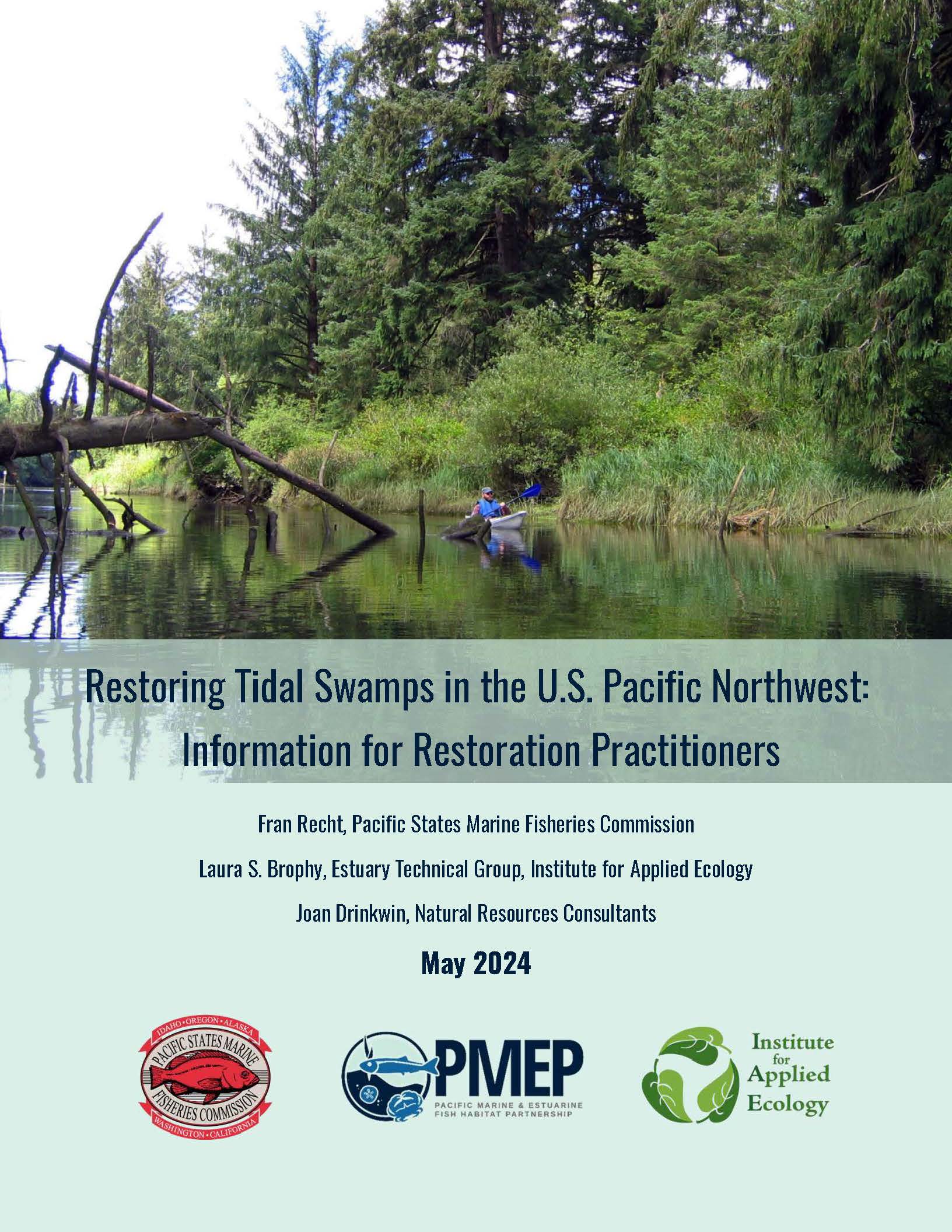
Restoring Tidal Swamps in the U.S. Pacific Northwest: Information for Restoration Practitioners (2024)
This report provides information on early efforts in the emerging field of tidal swamp restoration, including documentation of 14 active tidal swamp restoration projects in the Pacific Northwest. The report provides an overview of the ecological importance of tidal swamps, the importance of restoring these valuable habitats, and unique challenges that practitioners should consider when approaching their restoration.
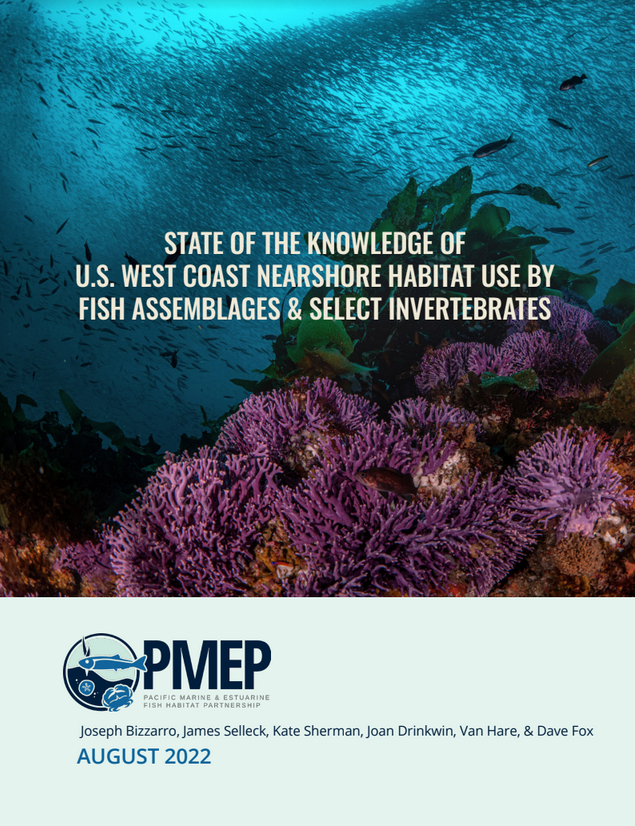
State of the Knowledge of U.S. West Coast Nearshore Habitat Use By Fish Assemblages and Select Invertebrates (2022)
This report documents the current state of knowledge of U.S. West Coast nearshore habitat use by fish assemblages and select marine invertebrates. It reports on the compilation of standardized spatial data on nearshore habitats within defined nearshore zones. It is designed to provide a big picture of fish habitats throughout the U.S. West Coast: a baseline against which we can investigate changes, shifts, and adaptations.
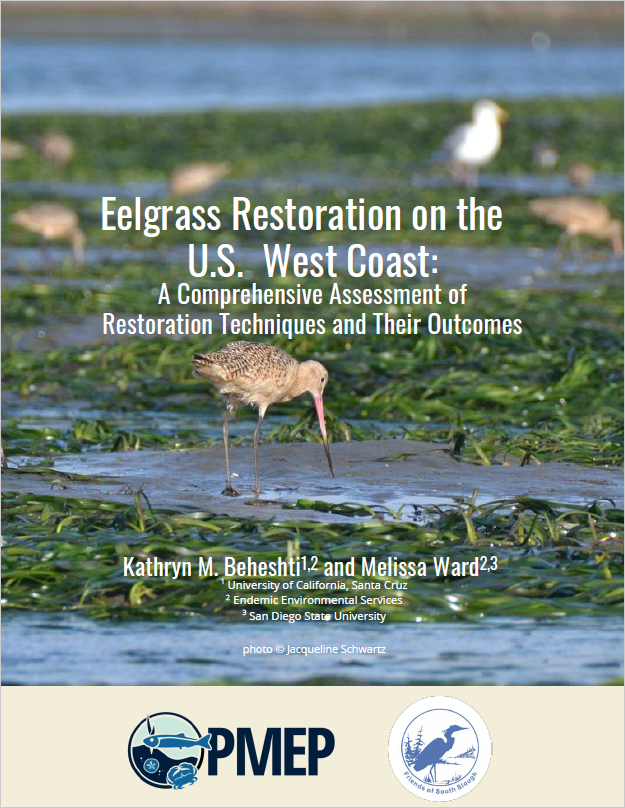
Eelgrass Restoration Synthesis on the U.S. West Coast (2021)
In 2020, PMEP commissioned a report to synthesize eelgrass restoration project successes along the U.S. West Coast to identify best practices for eelgrass restoration and mitigation. The authors of the report reviewed and synthesized data from 51 eelgrass restoration (non-mitigation and mitigation) projects from California, Oregon, and Washington. They identified those methods and approaches that resulted in successful restoration.
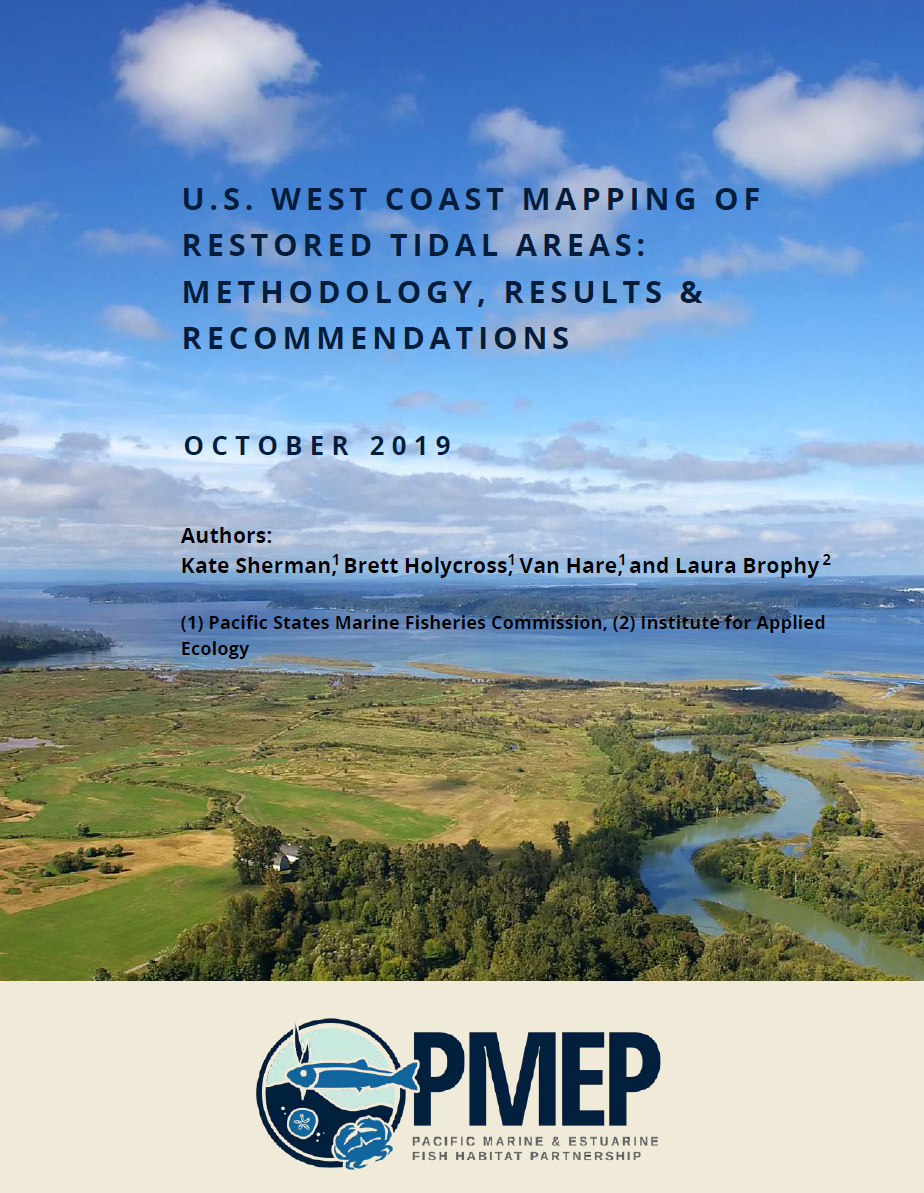
U.S. West Coast Mapping of Restored Tidal Areas: Methodology, Results & Recommendations (2019)
The Pacific Marine & Estuarine Fish Habitat Partnership (PMEP) identified a need to update its recent assessment of tidal wetland loss (TWL) to include areas where tidal connectivity and inundation have been restored. PMEP mapped 127 tidal reconnection projects across the West Coast, identifying 8,085 hectares (19,978 acres) of restored tidal wetland habitat.
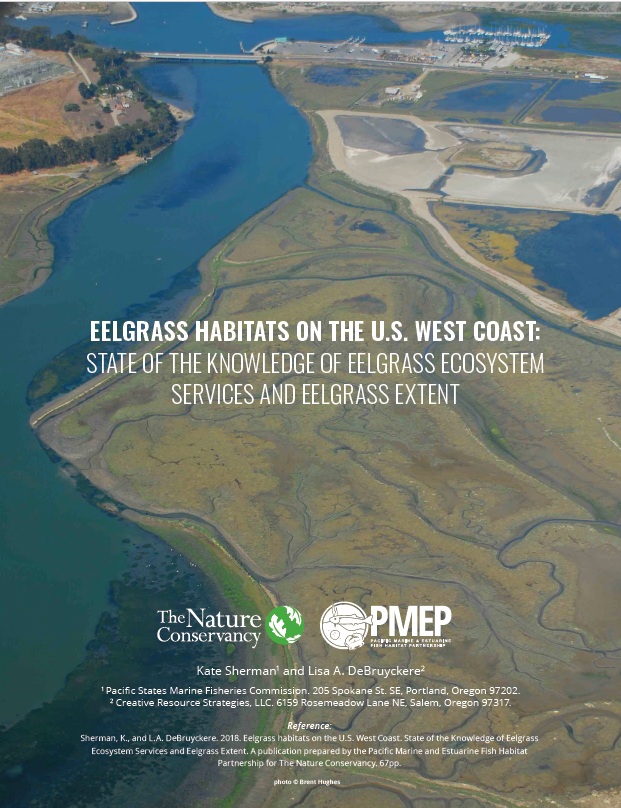
Eelgrass Habitats on the U.S. West Coast: State of the Knowledge of Eelgrass Ecosystem Services and Eelgrass Extent (2018)
Eelgrass, a type of marine flowering plant, can serve as a biological indicator of ecosystem health and is threatened by numerous human activities. This report provides a synthesis of the state of scientific knowledge of U.S. West Coast eelgrass habitats and the ecosystem services they provide, as well as identifies knowledge gaps for future research. As part of this assessment, available data showing the presence and extent of eelgrass along the West Coast was compiled into a geodatabase.
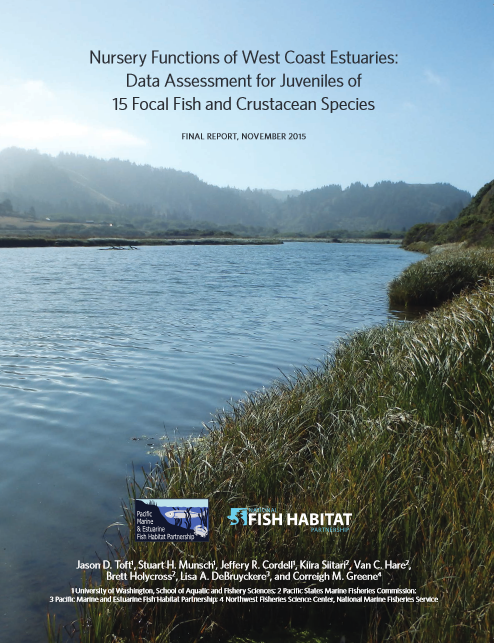
Nursery Functions of West Coast Estuaries: Data Assessment for Juveniles of 15 Focal Fish and Crustacean Species (2015)
The assessment addressed the status of estuarine use along the West Coast for 15 “focal” fish and crustacean species. These species’ life histories span all or a significant portion of West Coast estuaries. The overall objectives of the assessment was to synthesize the available data into a common format allowing for (1) creation of maps displaying species location, average frequency of occurrence, and average catch per unit effort (CPUE), and (2) comparison of the data, using the best quality portions of the dataset, to presumed habitat impacts measured by estuarine stressor scores.
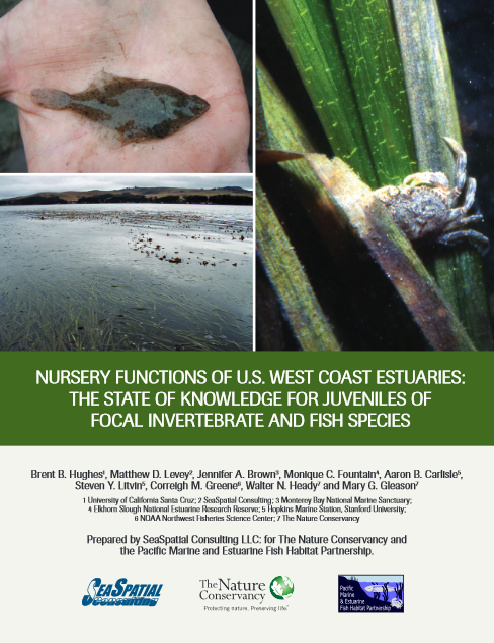
Nursery Functions of U.S. West Coast Estuaries: The State of Knowledge for Juveniles of Focal Invertebrate and Fish Species (2014)
This report expands upon previous efforts summarizing juvenile use of estuaries and synthesizes the existing geospatial data and information on the nursery role of estuaries for a group of ecologically and economically important fish and invertebrate species. It aims to synthesize: 1) important and emerging threats to the nursery functions of West Coast estuaries, 2) tradeoffs associated with the management of habitats for species specific nursery function, 3) knowledge gaps and 4) potential management actions to conserve or restore nursery function. The review showed that despite good information demonstrating the importance of estuarine nurseries for some species, significant knowledge gaps remain.
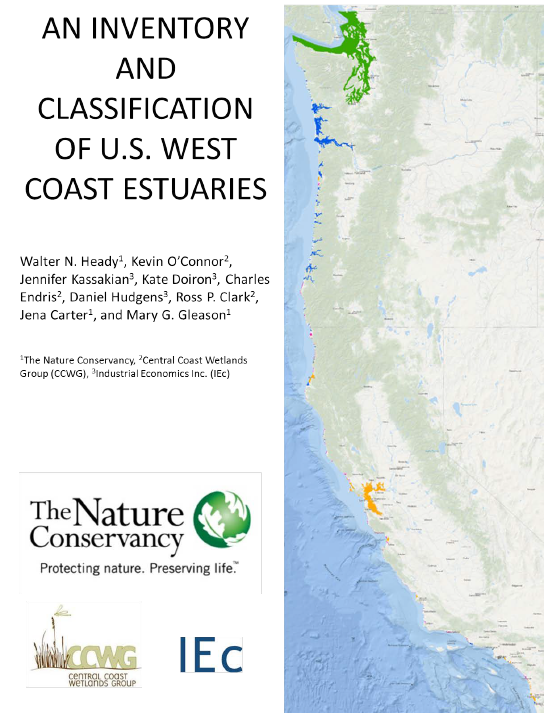
An Inventory and Classification of U.S. West Coast Estuaries (2014)
PMEP developed a comprehensive inventory of U.S. West Coast estuaries. PMEP and its partners compiled information from previous inventories and also included additional estuaries identified through National Wetlands Inventory (NWI) and aerial imagery. PMEP developed this inventory and geodatabase with the understanding that although this is a much needed first step to guide management of these valuable resources, it is simply the first step. PMEP intends for the geodatabase to be a living database and to be updated and improved upon through time.
